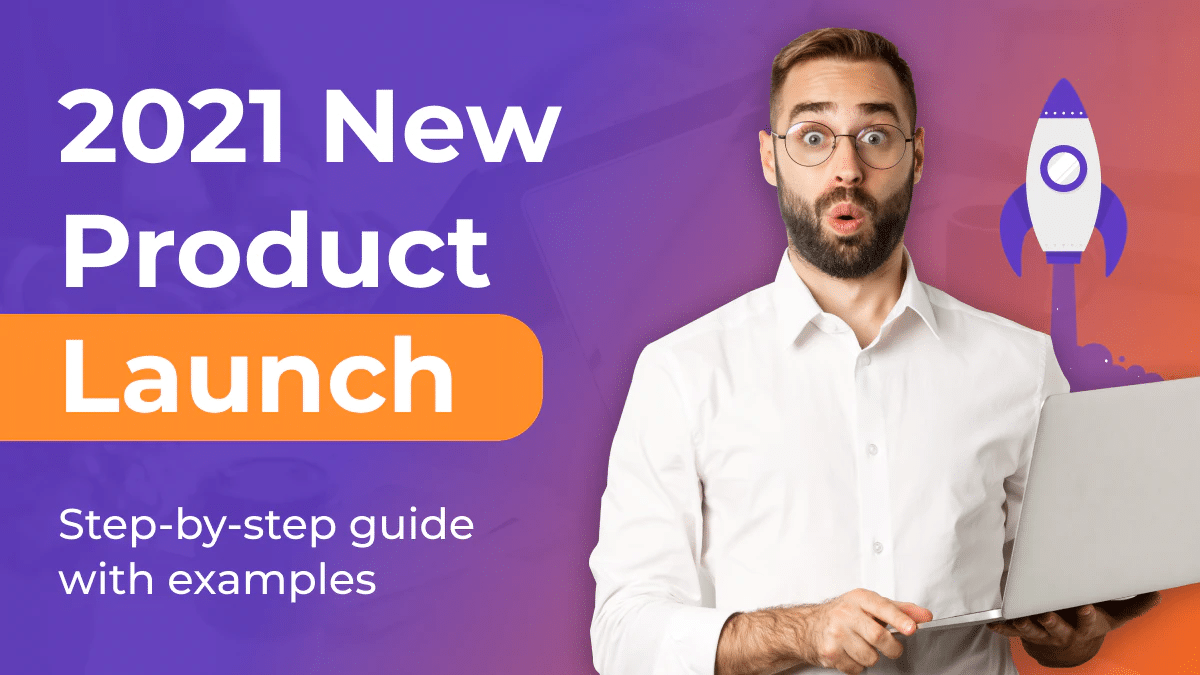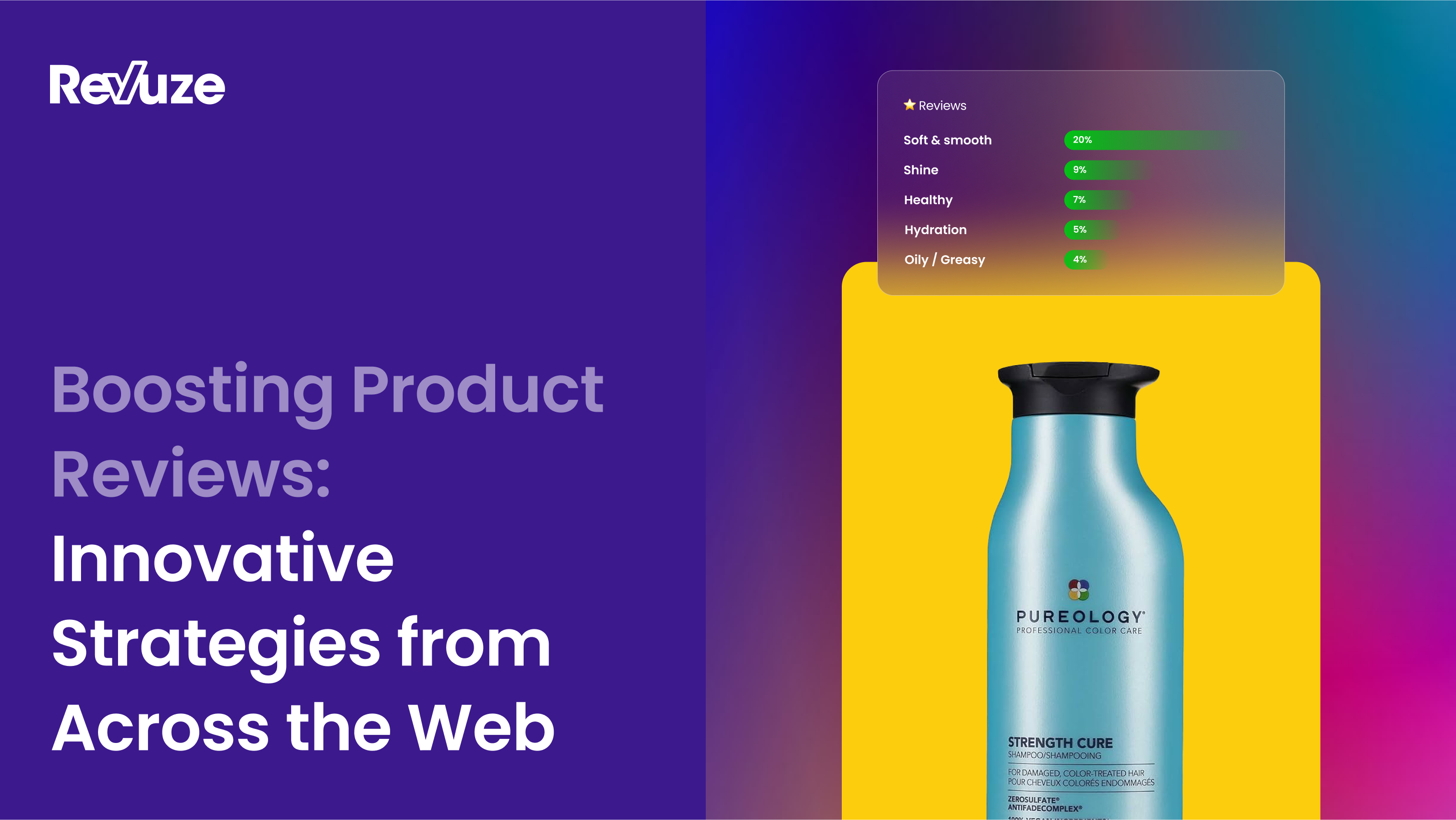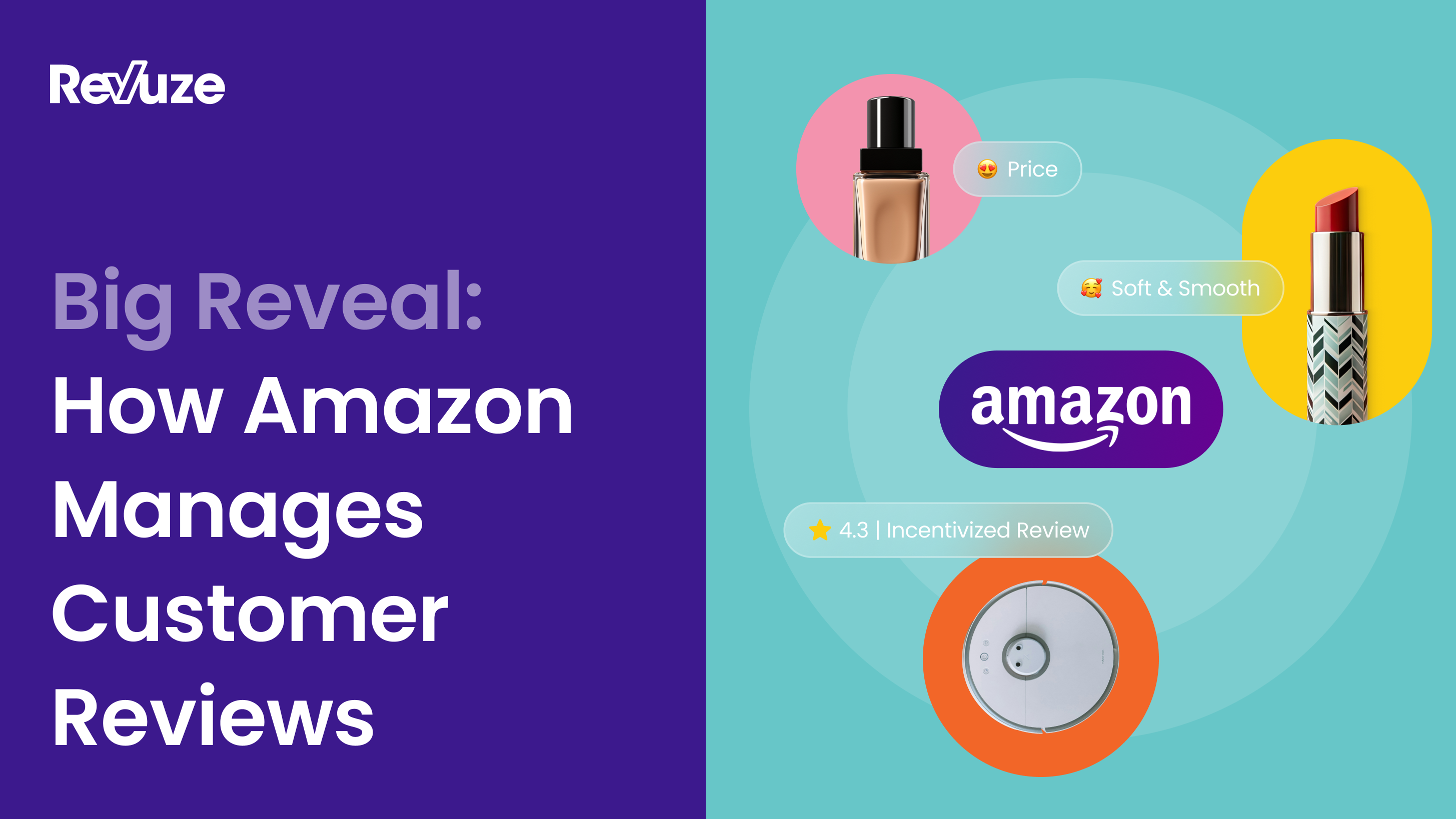
Launching a new product is not a piece of cake. It requires careful planning and timely implementation of strategies to make your product launch a success.
Although it’s understood that you are super excited to launch your new product, you should never rush the launch process. Why? Because 95% of new products fail and don’t convert into a super selling product.
It’s a well-known fact that making people buy your product is the most challenging job. To maximize your chances of product success, you should plan your launch and avoid the common blunders that most businesses make during a new product launch.
Common Pitfalls To Avoid On New Product Launch
Here are some common mistakes you should avoid when launching your product:
1- Not Defining Your Target Audience
Unless you know who to target, you can’t create an effective product launch strategy. Defining your target audience helps create personalized marketing copies that best serve the needs of your prospects and builds a stronger referral base.
At this stage, you need to find answers to the following questions:
- What is the action you want your target audience to take?
- Who is more likely to take that action and start using your products?
- What are their demographics (age, location, gender, income level, etc.)?
- What are their pain points?
- Which channels do they use the most?
- How does your product solve their pain points?
- Which products are they currently using that closely resembles your product?
- How much are they spending on that product?
- When are they most likely to buy your product?
- How are they most likely to buy your product (online or offline, cash or card, one-time or recurring)?
- How can they reach you for feedback?
- How can you reach them for support?
- What makes them happy? Which offer (free demo/discount/free trial) are most likely to take any action in favor of your product?
Answering the above questions will help you to define your target audience and prepare you well for the next step.
2- Failing to Soft-Launch the Product
Soft-launch is all about offering a beta version of your product to select customers. Soft-launching the product has two significant benefits.
- First, it helps identify major bugs/issues in the product before launch, enabling you to make new customers happy and avert bad reviews.
- Second, it builds interest in your product and increases the chances of word-of-mouth marketing.
Samsung’s Galaxy Note 7 is an excellent example of product failure because the company neglected the soft-launch of the product. The hybrid smartphone/tablet had two battery design flaws, which caused the phones to catch fire. As a result, Samsung had to recall 2.5 million Note 7s just two weeks after the phone was launched.
Therefore, make sure to conduct usability tests with impartial beta testers before you launch the product.

3- Not Preparing to Market the Product Until It’s Too Late
Simply creating a product is not enough. You need to create a buzz for your product in the market for people to start buying your product.
It is essential to build a marketing plan that covers pretty much everything from generating hype about your product to converting prospects and retaining customers.
Your marketing strategy must include:
- The core messaging (or USP).
- Product benefits.
- Content marketing plan for each stage of the buying funnel.
- Plan to acquire more customers.
- Strategies for product expansion.
- Plan to increase the number of repeat orders, up-selling, and cross-selling.
- Techniques to nurture your existing customer base for better retention.
[banner_text text=”Read our market report on the Apple AirPods Max” button_text=”get the report” button_link=”https://www.revuze.it/resources/apple-airpods-max-one-year-later/”]
How to Craft a Pre-Launch Marketing Strategy: 8 Actionable Steps
Most big brands follow pre-launch strategies to build curiosity around their new product. From creating buyer personas to building the hype about the product, a lot goes into successful pre-launch strategies.
Let’s have a look at eight actionable pre-launch marketing tactics that can help you achieve your sales goals.
1- Identify Your Target Audience
Identifying your target audience is the base of all your marketing strategies. The more clearly you determine your target group, the better you can understand how and where to reach your prospects.
Follow these three steps to identify your target audience:
- Market segmentation.
- Preparing a customer profile.
- Creating a buyer persona.
Now, let’s understand these steps in detail.
Market Segmentation
Begin with market segmentation. It will help you understand the specific needs of a customer base. When doing market segmentation, consider these two things.
- Define who is likely to use your product.
- Organize your market by industry.
For example, if you manufacture biometric products, here’s how your market segment will look. It also includes how far you can break down a particular industry.
Biometrics:
- Offices:
- Banks and financial institutions
- Other companies
- Logistics company
- SMBs
- MNCs
- Residentials:
- Societies
- Individual homes
- Schools/Colleges
- Universities
- Junior college
- Primary and high schools
When you segment your target market, it helps you align your advertising copy as per your target industry.
Preparation of Customer Profile
Next, create a customer profile. It should cover the necessary information about your target market. Your customer profile should include:
- Age: What age group is most likely to use your products? Does it comprise millennials, middle-aged people, or seniors? This is vital because customers of different age groups will respond differently to your marketing message.
- Location: Where do your potential customers reside? The buying habits of people who live in urban areas differ from rural residents. Besides, the neighborhood will help you figure out the most important hours for you to target people from different time zones.
- Income level: Not everyone can afford your product. Therefore, it is essential to target people with the right income level.
- Stage of experience: Are your customers likely to be marketers? C-suite executives? Sales representatives? Determining the stage of expertise will help you narrow down the list of your ideal prospects.
Creation of Buyer Persona
The next step is to create a buyer persona. It is a detailed description of your ideal customer. Your buyer persona should include:
- Goals: What is your target audience aiming to achieve? It includes their primary and secondary objective. For example, for a gamer, the primary purpose might be to buy a desktop that supports high-end games while the secondary goal would be to ensure that the product has an eye-friendly screen.
- Challenges/Pain points: What is the biggest challenge/pain point of your target audience? What are they struggling with?
- How do your prospects spend their day: Do they spend a lot of time online or offline?
- Preferred mode of communication: Do they prefer emails, SMS or phone calls, and how often?
- Motivation: What encourages your customers to make a purchase? Is it because of convenience? Is it to save time? Is it to reduce their work burden? Is it price?
Now that you know what information to collect, here are a few ways to find the answers to the above questions.
- Survey Existing Customers: You can discover a lot about your prospects by surveying your existing customers. Send questionnaires to your existing customer base via emails or website pop-ups. You might need to offer some incentive to convince them, but their answers will be invaluable for your buyer persona research.
- Check Your Analytics: Data from your Google Analytics account (or any other tool that you use) can provide you with the demographics information (location, age, device) about the people who are currently interacting with your website.
- Talk to Your Employees: Your sales team is likely to have a wealth of information about your customers. Discuss with them, and if you spot something occurring regularly, add it to your buyer persona.
Once you’ve collected all the necessary information, compile them together to build your buyer persona. Continuing the above example. Here’s how the buyer persona of a biometrics manufacturer would look like.
- Locations: United States, Mexico
- Key decision-maker: Financial advisor, principal, security consultant, or secretary
- Age: 25+
- Challenges/Pain points: To track attendance or strengthen security
- Buying Motivation: Wants a more comfortable and better way to monitor the attendance
- Buying concerns: Security of users’ data
- Primary device used to browse the internet: Laptop
- Preferred mode of communication: Email
2- Conduct Thorough Market Analysis
You have created a great product, but how does it compare to similar products in the market? What are the gaps in the current market? What will actually sell?
To get answers to these questions, a comprehensive market analysis is essential.
The three steps to perform a market analysis are:
- Competitor Analysis
- Identification of Trigger Points
- Product Trend Analysis
Competitor Analysis
Competitor analysis gives you a fair idea about where your competitors are positioned in the market and what trends they’re reacting to. This, in turn, will enable you to improve your marketing strategy and dominate the market.
You need to focus on the below things when conducting a competitor analysis:
- How do they communicate product details to their customers: website, ads, social media, etc.?
- How detailed are their product descriptions? Are there any missing information?
- Where have they positioned the call-to-action? Is it clearly visible, or do they get lost due to poor positioning or color scheme?
- What is their USP? What features/benefits they’re capitalizing on?
- Why are customers buying their products? Is it because of the value, experience, pricing, or something else?
- How are they differentiating their product from their competition?
- What is the percentage of customers satisfied with their product? What are the most common issues in their product?
- Do they have great social media engagement? If yes, then what do they share the most?
- Do they have a great SEO strategy? What are the channels they are using to acquire traffic?
Identifying Trigger Points
Trigger points help you acquire more customers and increase your business revenue. Here are some of the trigger points you must include in your product launch strategy:
- Giving free trials: Offering free trials for a limited time, eliminates the commitment from the customers’ side, thereby encouraging them to try your product. Another great thing about free trials is that it can help you generate tons of leads.
- Using customer retargeting: Customer retargeting is a form of online advertising that is designed to help you reach users who visited your site but bounced back without taking any action. Retargeting platforms like Google, Facebook, and AdRoll can help you make the most out of customer retargeting.
- Writing mock PR: Mock PR is all about pitching your product to stakeholders and employees of your company through a press release-style document. It ensures everyone in the organization is on the same page with the product launch. If they have a hard time understanding your product, your customers might struggle as well. If your team loves it, then the chances are that the new product launch will also go well.
- Case Studies: If you have beta tested (soft-launched) your product, you can prepare case studies on people who benefited the most from it. Use numbers to indicate the effectiveness of your product to appear more credible.
Product Trend Analysis
Product trend analysis provides insights about future market shifts and directions. This helps you to identify trends in changing consumer needs and behavior. You can better prepare for it and improve the efficiency of your product launch marketing strategy.
Tools like Revuze can provide a more comprehensive and accurate view of the consumer market. Revuze’s self-training, low-touch AI technology collects data from a variety of sources (like reviews, social media, emails, and more). It then analyzes the data and provides highly-granular customer feedback that helps determine future product trends.
3- Note-down Positioning Statement
A positioning statement describes how your product fills a specific need of your target audience in a way that your competitors don’t.
When writing your positioning statement, consider the following.
The Unique Selling Point of the Product
Why do you want customers to choose you over your competitors? What makes your product unique/better? It could be an additional feature or something that reflects your product. However, make sure that your USP is meaningful to consumers.
For example, Sony devices have robust cameras and sound quality, but so do other mobile devices. Hence, they use the USP: waterproof and dust-resistant.
Sony’s USP indicates that its mobile devices can be used even in the rain or on the beach, thereby encouraging people to purchase.
How Does It Solve The Problem of The People?
Buyer persona gives you a fair idea of the pain points of your customers. Use it to highlight how your product solves their problems.
Mailchimp’s homepage is an excellent example of a brand highlighting how their product solves the problem of their prospects. It reads, “many businesses are working harder than ever to stay connected with customers. Start with a custom domain for up to 5 years, then build a free website to get your business online quickly”.
This is great because the copy first talks about the most pressing problem of their target audience and then provides a solution to it.
Product Innovation
Product innovation is all about representing a new way to solve a problem that a significant number of consumers have. It helps you identify and address gaps in the current market. This, in turn, enables you to satisfy consumer needs in a way that is new and refreshing.
4- Ways to Reach Your Audience
This step determines how you plan to reach your audience.
Content marketing is one of the best ways to create a buzz about your product before its launch.
Content marketing will help you reach people at every stage of the buyer journey.
The best part about content marketing is that it will continue to help you acquire and nurture leads even after the launch of your product.
The content marketing funnel is divided into four stages.
The Awareness Stage
In this stage, people are not aware of your product, and they come across it for the first time.
You should publish articles that provide answers to the questions asked by your target audience.
The awareness stage is all about educating the customers about your product so that they remember it.
Some examples of content you should publish in the awareness stage are:
- Infographics
- Blog posts
- Educational videos
- Documentaries
- Research papers, etc.
You should reach out to your target audience on social media to spread the word about your new product.
The Deadpool franchise did a great job of promoting the film by creating a Tinder profile for the character. Promotion of the movie at the awareness stage helped Deadpool become one of the highest-grossing R-rated films.
All you need is to think how you can reach out to your audience in the best possible manner so that they remember your product and wait for its launch anxiously.
The Consideration Stage
At this stage, a prospect decides whether your product is the right fit for them by comparing it with other competitors in the market.
Some examples of content you should publish at the consideration stage are:
- Comparison articles
- Checklists
- Ebooks
- Product demo videos
- Product webinars, etc.
For example, people looking to buy a new laptop might search with a query like “Asus vs HP laptops ”. If you just launched a new version of HP laptops then you need to make sure your content offers a comprehensive comparison between the laptops and highlights the best features of HP laptop to the readers.
Your target audience should be convinced reading reviews and comparisons on different sites that HP laptops are the best. This is the power of content marketing at the consideration stage.
The Decision Stage
At the decision stage, the prospects have made their decision to purchase your product and are looking for reasons to buy your product. You should create content that makes them stick to your product, thereby reducing the churn rate.
Some examples of content you should publish at the decision stage are:
- Case studies
- FAQ’s
- Whitepapers
- Reports
- Video Testimonials
Slack is a great example of a brand that publishes great content in the decision stage. They publish content that trains users on how to use Slack.
They also have a separate landing page for customer stories (the reviews stage) that indicates their product delivers results.
Customer Feedback and Reviews Stage
At this stage, your prospects have already become your customers. Now, you should reach every customer to collect feedback and encourage them to leave reviews on your site.
Feedbacks help you to improve your product, while reviews will motivate potential customers to purchase it.
Outreach Plus, an email outreach software, encourages its customers to provide reviews. It then publishes the reviews on the website to entice prospects into trying their product.
Bonus Tip: Leverage The Power of Social Media
Another way to reach your audience is through social media. Publish content about your product and how it solves your target audience’s problems. Make sure to use relevant, industry-specific hashtags to broaden the reach of your content.
For example, Later, an Instagram Scheduling product used social media to promote their new feature (Instagram Stories Scheduler). They published a post about a free course on “Instagram Stories for Business” while indirectly advertising their new feature. The post also had relevant hashtags to help them increase their reach.
5- Conduct Sensational Marketing Campaign
Your marketing campaign is responsible for attracting, engaging, and converting potential customers. Your product might be exceptional, but if your marketing campaign isn’t great, you’ll struggle to acquire customers.
Here are three tactics to help you create a sensational marketing campaign.
Include Customer Emotion
95% of purchasing decisions are driven by emotion. It could be fear, frustration, anger, FOMO, or the desire to be first. Emotions can be tied to almost every product.
For example, AWeber, an email marketing tool, knows how stressful it can be to send emails to each subscriber and generate remarkable results.
Hence, they created a copy that triggers human emotions to increase the chances of conversion. Their homepage banner reads, “stress-free email marketing software designed to help your small business grow.”
Look how they focused on the words “stress-free,” “help,” and “grow” while highlighting their target audience, i.e., “small business.”
Build the Hype Everywhere
It’s essential to get your target audience excited about your product. Here are a few ways to build hype for your product.
- Conduct special events
- Tell a story
- Give a sneak peek into your product
- Collaborate with social media influencers
- Create a feature video of your product
Apple is a good example of a brand that builds hype for its product before its launch. Not only they publish high-quality photos and videos, but they also conduct special events.
Take Preorders
Preorders help you determine how successful your product will be. Besides, you get funds to build your product without taking loans or going through investor rounds.
Preorders also build hype and excitement among your customers. They are more likely to start telling their friends and family about how excited and eager they are to buy your product.
Tesla Cybertruck, for instance, has received more than 600,000 preorders. Besides, their customers are talking about it all over social media. This helped them generate the much needed hype about the product. There are around 90,270 posts on Instagram alone with the hashtag cybertruck. Impressive! Isn’t it?
6- New Product Launch: Activities For The Big Day
The day has come. You’re preparing for the big day. Remember, product launch day isn’t only about marketing, but it is also about closing deals.
Begin with choosing the right channels for your launch.
While creating buyer personas, you have already listed the channels your target audience spends most of their time on.
For example, if you’re launching a tech product, you would like to explore Product Hunt as it already has a massive audience looking for new products.
Here are some activities you should be doing on the product launch day.
- Personalize the attendee experience by providing them with a customized template/t-shirt or one-on-one access to your product.
- Invite major news outlets to cover your launch.
- Request industry leaders to talk about your product.
- Distribute flyers with your website’s address and contact information, so that attendees can connect with you after the launch.
- Align your marketing and sales teams together. The marketing team will drive traffic to your new product launch event while the sales team will make efforts to convert them.
Whether you’re running an event or launching your product online, it is essential to ensure your sales team can reach your customers. That might include providing the right resources to them, such as a booking system or feedback collection form.
Also, make sure that your sales team has every single detail about your product and can answer all the queries of your customers. This will eliminate any last-minute hassle and increase the chances of conversion.
7- Post-Launch Guidance
Now that you’ve launched your product, you would want to check if everything went as planned.
This comes down to your personal goals, but here are a few metrics to focus on.
- Affiliates and partnerships: Who brought the best results? Can you figure out why they brought the desired results while others failed?
- Top referring domains: Did the publications you expected covered your launch? Were there any surprising sources of traffic?
- Email open and click-through rates: What campaigns worked well and what didn’t? Out of the ones who clicked on the link, how many converted?
- Views and conversions from blogs: How many people read your blog? Which post outperformed other articles? Why?
- Audience metrics: Look at how much time people spent on your product pages, examine the bounce and exit rates, and identify the sites they went after landing on your site. This will help you analyze if your product pages need a revamp.
Also, revise the marketing strategy that you created before the product launch. Which of your strategies worked great, and which didn’t? What did you fail to anticipate? Was there anything that you could’ve done better?
This will help you improve your future marketing and convert more leads.
When it comes to sales, not everyone will buy your product on the day of launch. But, this doesn’t mean they won’t purchase ever. Therefore, it’s essential to stay in touch with prospects and nurture them until they’re ready to buy.
Offer free-trials, run product-focused webinars, and produce in-depth product demos. This will give you new resources to share and encourage prospects to try your product.
If you’ve their email address, consider sending emails that provide them more reasons to invest in your product. It might mean offering a discount or an insider look.
Additionally, consider running retargeting ads on Google and Facebook to stay on top of the mind of your prospects.
8- Increase Customer Retention Rate and Reduce Churn
Now that you’ve acquired customers, shift your focus to retention. 80% of your future profits will come from only 20% of your customers.

Use the following strategies to retain customers and reduce churn rate:
- Provide 24/7 support.
- Check on your customers regularly via emails or call.
- Conduct post-launch webinars.
- Collect customer feedback via surveys and use the results to enhance the user experience.
- Approach the customers who have stopped using your product to find out the reason for it. Inform them what’s changed in your product since they last used it and encourage them to come back by offering discounts.
- Create a knowledge base or community forum that educates your customers about every feature of your product.
- Use social listening tools to monitor what your customers are saying about your product on social media. This will help you respond to negative comments quickly and enhance the customer experience.
- Create a customer loyalty program that rewards your customers when they take your desired action (e.g., buy from you, refer a friend, etc.)
Remember, the higher the retention rate, the higher the recurring revenue. Therefore, make efforts to reduce the churn rate and retain as many customers as possible.
Conclusion
Launching a product is both exciting and challenging. It is essential to create a marketing strategy that brings results.
Identify your target audience, conduct comprehensive market analysis, and create sensational marketing campaigns to reach the right prospects. Don’t forget to focus on customer retention tactics post product launch to increase your recurring revenue.
 All
Articles
All
Articles Email
Analytics
Email
Analytics













 Agencies
Insights
Agencies
Insights